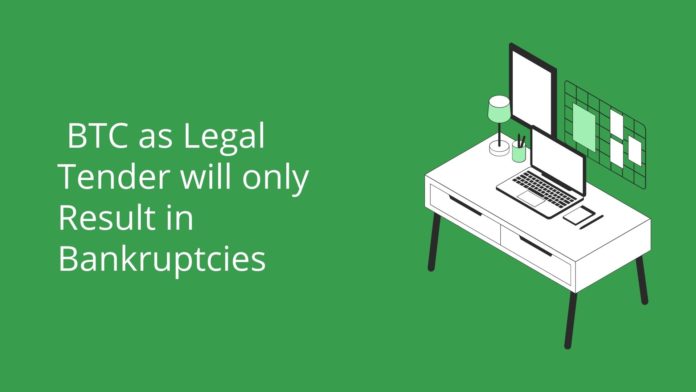NourielRoubini, a former White House senior economist who is currently a Professor of Economics at New York University’s Stern School of Business and CEO of Roubini Macro Associates, LLC, is a keynote speaker at the recently concluded CoinGeek Conference, broadcasted live from Zurich, Switzerland. During a panel discussion, of which former trader, risk specialist and best-selling author Nassim Nicholas Taleb, financial cryptographer Ian Grigg, and author of the Bitcoin white paper and nChain Chief Scientist Dr. Craig S. Wright are also part of, Roubini states that BTC being used as legal tender will only result in bankruptcies everywhere. The panel is moderated by Jimmy Nguyen, the founding president of Switzerland-based global industry organization Bitcoin Association.
Roubini’s statement is a reaction to recent news that El Salvador has now become the first country to make BTC a legal tender. The senior economist explains that BTC’s volatile nature, with its value going up and down by as much as 50%, will only bring losses to everyone when used as legal tender. For instance, if the value of BTC drops by 30%, then mortgages would consequently increase by 30%, creating huge losses for borrowers. In the same way, when it goes up, then lenders will suffer. If this cycle continues, then many will be forced to file bankruptcies. Furthermore, BTC’s unscalable network that can only process a maximum of seven transactions per second (tps) at an average fee of $6.16 per transaction is not a viable and practical payment system.
“For something to become a scalable means of payment, as I said, this thing has to have a stable price relative to some fiat currency or some kind of price index. So by definition, as I said, [BTC] itself that moves up and down in value cannot be there. And therefore, anything that would even want to have the ability of doing payments—large or small or micro of whatever sort—should effectively be a stablecoin, first of all,” Roubini said.
Wright goes on to explain that what his original design for Bitcoin is the opposite of BTC, and his vision, which has been realized when BSV restored the original Bitcoin protocoland unlocked unbounded scaling last year, is aiming for is being the plumbing that allows for payment transactions that can hardly be felt by the masses. For instance, BSV’s current average fee per transaction is only at $0.0037 and it averages at 5,124 tps. BSV as a stablecoin, which is a digital currency fixed on a fiat currency, can also be achieved through this kind of infinitely scalable network.
“When you’re buying web pages, when you’re buying things, well, you need an underlying platform. And we can do it cheaper than the banks can do it themselves. So, my answer is economies of scale. What are we going to do? I’m not talking about selling you a token to watch the money go up in price. I’m talking about utility. I’m talking about getting the U.S. Fed, I’m talking about getting the Euro; I’m talking about getting other countries to build their system to actually issue digital currency that is cash,” Wright explained.
“I think if you want the original Satoshi paper to succeed, what we’ve learned is that what you call digital cash must be stable cash… If you manage that, then a system for peer-to-peer transactions would have a good chance,” Taleb added.
As the BSV blockchain continues to scale and nanotransactions become available through the Teranode upgrade that will be released later this year, transaction fees are expected to further be lowered. And with this kind of practical and efficient system in place, coupled with a stablecoin, it can be said that BSV has more than just “a good chance” of making it.
















